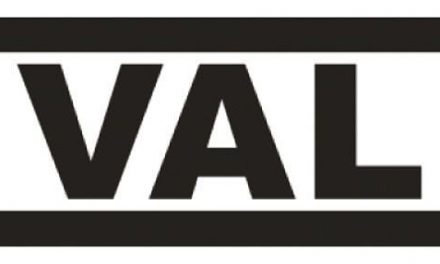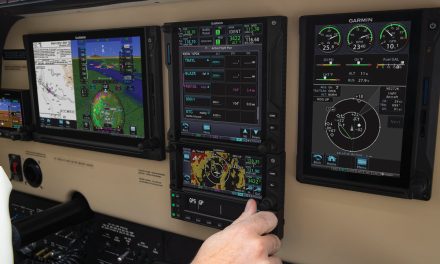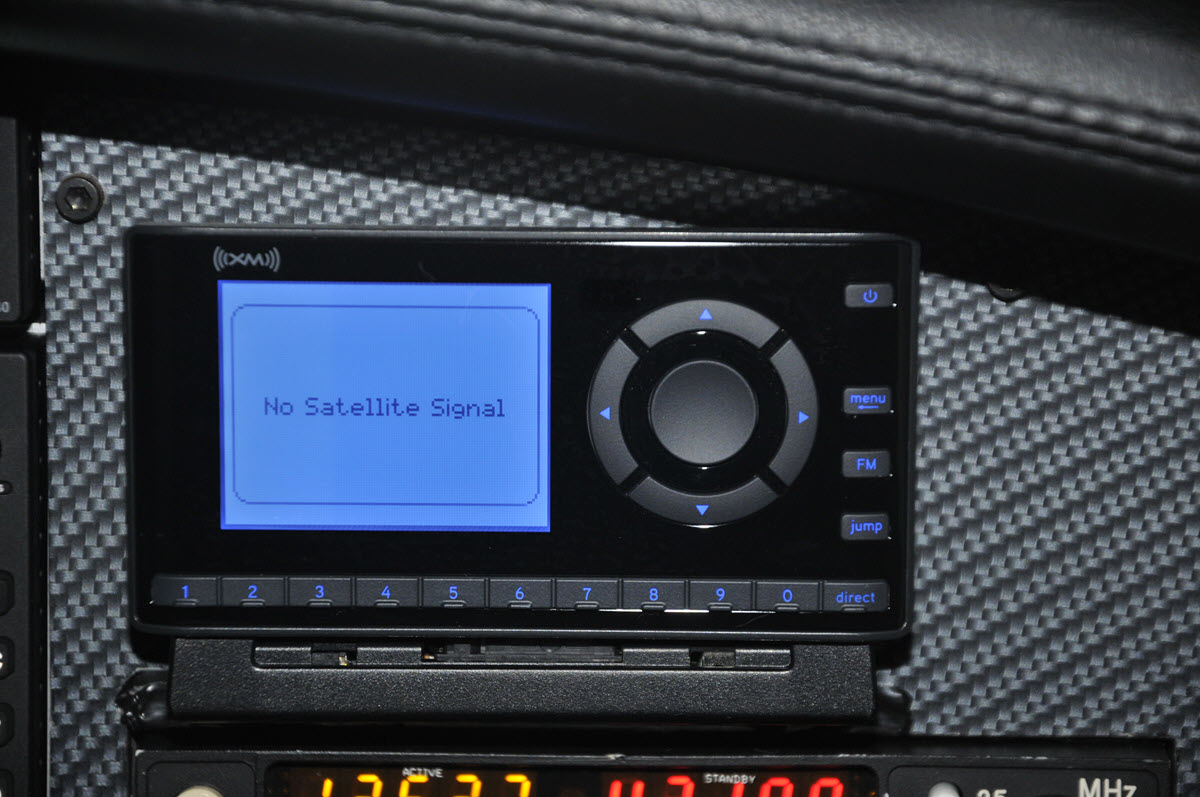Last month, we talked about the direction that Canada was going with its ADS-B mandate. For a variety of reasons, Nav Canada, the organization responsible for implementing ADS-B there, has chosen to go with what is being called space-based ADS-B.
You may not have thought about this, but a significant role of ADS-B in the U.S. is dependent on ground-based antenna systems. Aircraft on 1090 MHz (Mode S) here in the U.S. see aircraft on 978 MHz (UATs) via a rebroadcast from the ground, and all WX and traffic is broadcast from the ground. I questioned this early in the process of equipping for ADS-B. Most pilots forget that the early attempts by companies in the subscription WX business, including Garmin and BendixKing, that were ground-based (and in some cases request-based). It did not work well. I thought the FAA would have considered that, but here we are.
Most pilots forget that the early attempts by companies in the subscription WX business, including Garmin and BendixKing, that were ground-based (and in some cases request-based). It did not work well.
Canada, on the other hand, seems to be going in the right direction, partially because of the broad expanses of Canadian tundra, plus Canada’s requirement to serve the busy commercial traffic traveling between North America and Europe over the Atlantic Ocean, making ground-based systems impossible or impractical. The Aireon space-based system requires dual antennas, unlike the U.S. system, so within a few years, if Canada has been a destination for you in the family aircraft, and you have already equipped for the U.S., you will be looking at a re-equip!
Is uAvionix Worth the Cost?
For legacy aircraft owners who shuddered at the estimated expense ($5,000) of adding ADS-B Out five years ago in their $50,000 airplane, uAvionix became a hero by allowing them to get it done for less than half that estimate with the skyBeacon and tailBeacon. Canadian avionics shops are decreeing that a typical installation of an ADS-B Mode S system with diversity (two antennas) will be $13,000 to $14,000 installed. I do not see where that number comes from, but if that is true, then uAvionix will again play the role of hero in the ADS-B diversity game with their tailBeaconX, estimated at about $6,200 installed.
We touched on the tailBeaconX in last issues discussion about avionics in Canada, but it dawned on me that we are talking about uAvionix a lot these days, and it is time to revisit them. If you are still thinking that uAvionix is a nice little start-up company that came along with a good, affordable ADS-B solution just when pilots needed one, you are way off. uAvionix is a large international company that specializes in micro avionics for drones, and they have brought their technology to general aviation. So far, pilots are loving it! Let’s take a fresh look at the GA products available from uAvionix, starting with the AV-30-C EFIS.
uAvionix Links
- Master Pilot Review uAvionix PIREP
- ADS-B in Canada (and uAvionix’s role in it)
- uAvionix Software Update Page
- uAvionix Receives STC for tailBeaconX
What Does uAvionix Cost?
uAvionix AV-30-C EFIS ADI and DG
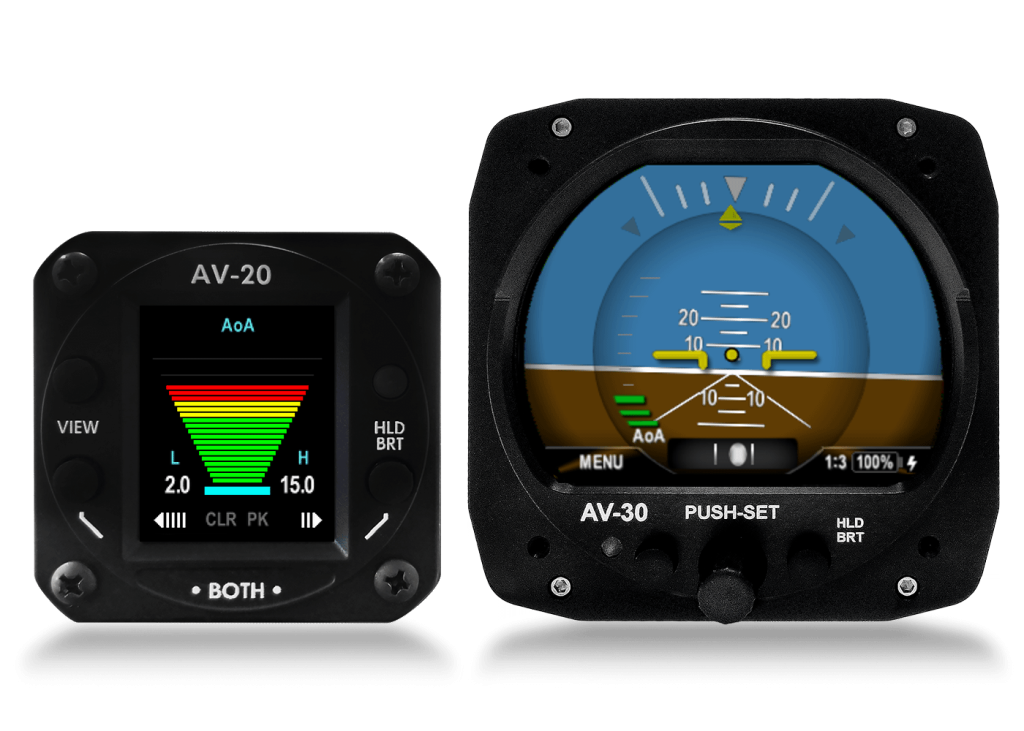
If ADS-B was the hot topic prior to Jan 1, 2020, EFIS certainly is at or near the top today. Dynon was first to market with their D10A, followed by Garmin with their G5 and now the GI 275. UAvionix introduced the AV-30 for the experimental market in 2018, followed by the AV-30-C certified version a year later at a price point that beats all the competition, not only on price but also on features and benefits.
The AV-30-C ADI ($1,995)
An attitude indicator (AI) provides attitude. An ADI provides attitude and direction. You typically add a magnetometer (mechanical remote compass) to an AI to make it an ADI. UAvionix uses new technology called inertial measurement unit (IMU) to provide direction in the AV-30-C. This is just one feature that sets the AV-30-C apart from others. But that’s just a start. The AV-30-C ADI includes a shopping list of other benefits. Here’s the list of features you find in the AV-30 at $1,995:
- Primary attitude
- Primary slip
- Primary direction indication
- Probeless angle of attack (AOA)
- Indicated airspeed (kts/mph)
- Altitude/vertical trend/alerter
- +8 / -8 G-Meter
- OAT/TAS/Density altitude
- Bus voltage
- GPS navigational data overlay
- Customizable colors, fonts, and layout
- Audio alerts (AOA, G, roll limits)
The AV-30-C ADI is also simple and quick to install. Our own Scott Scherer, Master Pilot, had the AV-30-C installed in his plane recently and concluded that it takes about eight hours, including paperwork, to install the AV-30-C ADI. At $100 per hour labor (a common number), that puts the AV-30-C ADI at $2,800 installed. Since your attitude indicator plays a significant role in IFR, updating yours to solid state is a significant safety improvement, and uAvionix makes it quite affordable!
The AV-30-C DG/GPS HSI ($1,995)
UAvionix introduced the AV-30-C as a solid-state directional gyro/GPS HSI, but the latter is still a work in progress. The AV-30-C DG provides a solid-state ADHRS-driven DG that is ready and legal for IFR flight. However, most pilots that are looking to add EFIS to their cockpit have expectations of light IFR or better. The concept of a GPS HSI makes a lot of sense, specifically for the light IFR pilot who uses GPS as their primary nav source.
Pilots with plans to fly deeper into weather will often have an integrated navigator as their primary with ILS capability and the AV-30-C HSI does not track VOR or ILS and will not work in that situation. The Garmin GPS 175 (or even better, the GNC 355 with built-in com) is a very popular upgrade with my light IFR clients, and the idea of a GPS-only HSI makes perfect sense in this situation.
However, the AV-30-C cannot fill that role right now. First, the AV-30 does not provide vertical deviation currently, and all the new WAAS IFR GPS units have and need that capability. Secondly, IFR pilots, even light IFR pilots, should have an autopilot. The ability to track a heading (when being vectored) is basic, and the AV-30-C is not ready to provide that. UAvionix is developing several solutions to get the AV-30 ready to meet the needs of the light IFR pilot.
First, the AP-Mini is an interface box that will allow your autopilot to track heading from the AV-30. They plan to start with the S-TEC line but hope to be able to interface heading to most popular, even legacy autopilots. The second improvement is called the AP-10, and its job is to make the AV-30 into a full GPS HSI with horizontal and vertical deviation and allow the AV-30 to legally fly a GPS-coupled approach. Thanks primarily to COVID-19, these improvements are not expected to be available until early 2022.
A Note About Heading Drift
Most pilots flying behind the AV-30 have no issues, but some pilots have reported heading drift. Remember, the AV-30 uses IMU to establish heading. Some pilots who contacted uAvionix reporting this problem simply confused DG heading with GPS track and expected them to agree. Your DG heading and GPS track are almost never the same. They could be — in a zero-wind situation. DG heading tells you the direction the nose of the aircraft is pointing. GPS compensates for wind drift and puts you on a track that flies you to your destination, correcting for wind drift.
If you are one of the pilots reporting drift in your AV-30, a software solution is in the works and should be available by the time you read this. In short, if you’re flying light IFR or equipping for it, and you have your eyes on the AV-30s, you will need to wait, at least on the GPS HSI.
Update: In late March, 2022, uAvionix issued a Service Bulletin to help pilots update their software and eliminate the heading draft problem. Click here to read or download the uAvionix Service Bulletin.
Here’s the link to the AV-30: uavionix.com/product/av-30-certified

AV-Link (certified estimated at $349)
AV-Link is the Wi-Fi module companion to the AV-30 panel display. AV-Link adds Wi-Fi connectivity to support live traffic from a supported ADS-B receiver, wireless firmware updates, and more with future features already in development. The certified version is coming to a hanger near you soon.
Here’s the link: uavionix.com/product/av-link-experimental
AV-20-S EFIS Back-Up Attitude Instrument ($895)
I frequently debate my light IFR clients about including EFIS in their legacy aircraft avionics upgrade budget. I believe it is a luxury in most light IFR upgrades. Instead, I point them to the AV-20-S. This unit replaces your existing clock/chronometer (legally) and provides solid-state attitude and a host of additional benefits. It makes a great companion to vacuum, mechanical gyros, and it’s simple to install.
Here’s the link: uavionix.com/products/av-20s

tailBeaconX/skyBeaconX ($4,200 with AV-30-C)
Note: This section before the tailBeaconX got STCed in April 2022.
You might think that sales of the original skyBeacon and tailBeacon have subsided, but uAvionix reports that sales are still strong. I concur, since the No. 1 path to my website is pilots still shopping ADS-B. They find my article from a few years back titled “ADS-B on the Cheap” from April 2018. Pilots who plan to stay in the continental U.S. will find happiness in the original beacons, but pilots near the northern border, with traveling to Canada in mind, need to rethink ADS-B and take a serious look at the tailBeaconX or the skyBeaconX, which is coming later. The X version meets the requirements of diversity, does it at a significantly lower price, and is also simple to install compared with diversity models from Garmin and L-3Harris. Canadian avionics shops are suggesting $13,000 to $14,000 to install a diversity Mode S transponder like those from Garmin or L-3Harris. uAvionix suggests 20 hours to install and sign off the tailBeaconX, putting that installation in the $6,200 range!
Independent testing in the space-based environment shows it performs well compared to the alternatives. The AV-30-C provides control of the X beacons and is included in the $4,200 package price, so the tailBeaconX meets the space-based ADS-B requirement and, at the same time, upgrades your attitude indicator to solid-state!
Here’s the link to the tailBeaconX: uavionix.com/products/tailbeaconx
Here’s the link to independent testing of the tailBeacon:
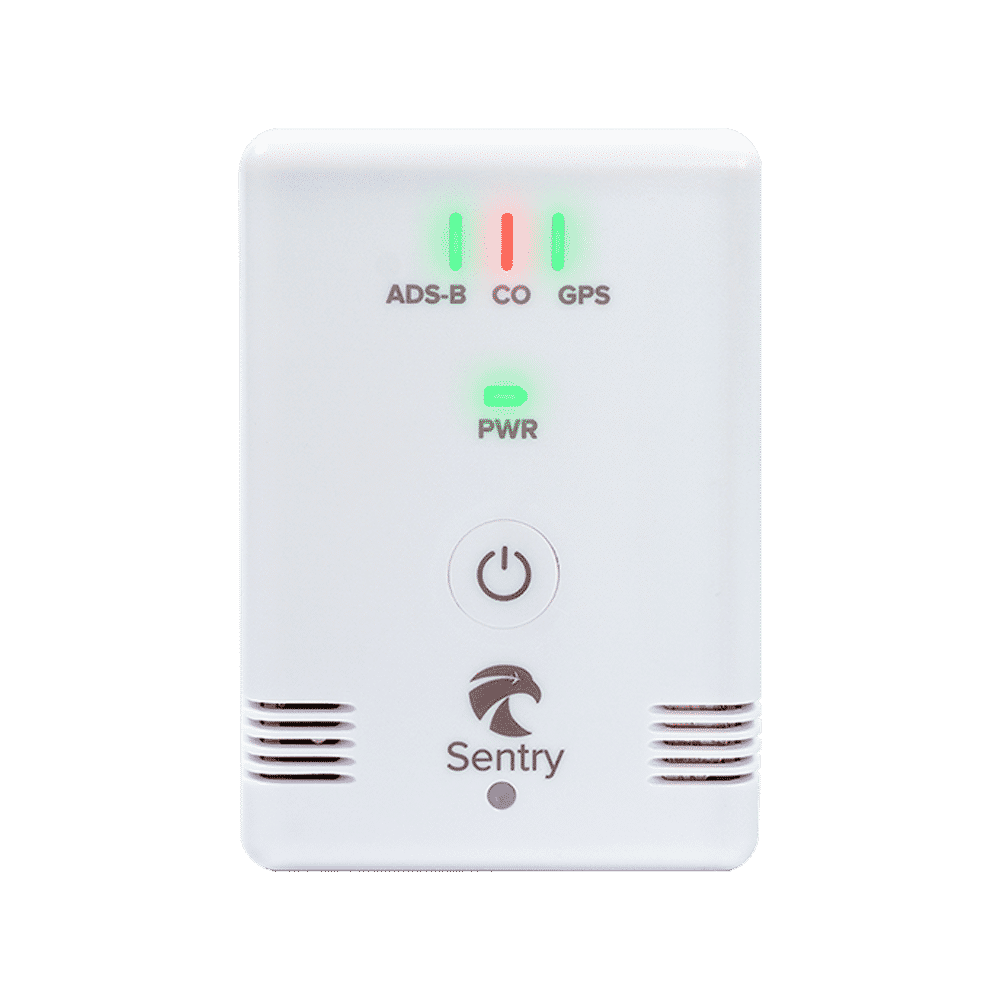
Sentry and Sentry Mini Portable ADS-B Receivers
uAvionix manufactures two popular and very affordable ADS-B In receivers marketed through ForeFlight, still the most popular of the aviation software companies. ForeFlight originally aligned themselves with the Appareo Stratus, but for the last three years, the Sentry has been the focus. UAvionix makes two models. The Sentry Mini, at $299, offers a dual frequency ADS-B receiver and an internal GPS. It has no internal battery and must be powered from a USB charging port. The original Sentry, at $499, has an internal rechargeable 12-hour battery (or USB connection) and adds a carbon monoxide detector. The uAvionix/ForeFlight Sentry and Sentry Mini are sold exclusively through Sporty’s Pilot Shop.
Here’s the link: www.foreflight.com/products/portable-ads-b-receivers
Here’s a link to a comparison of the two models: www.foreflight.com/support/sentry-mini
Additional uAvionix Products
echoUAT
uAvionix currently offers the echoUAT to the experimental/light sport market but plans to make it certified in 2021. The echoUAT is a remote mounted ADS-B Out and In transceiver that works with your existing Mode A/C transponder and wirelessly sends ADS-B WX and traffic to your iPad or Android tablet. UAvionix pointed out that many pilots prefer the anonymous mode available on UATs that is not available with a Mode S transponder. The experimental version is $999.
Here’s the link: uavionix.com/products/echo-uat
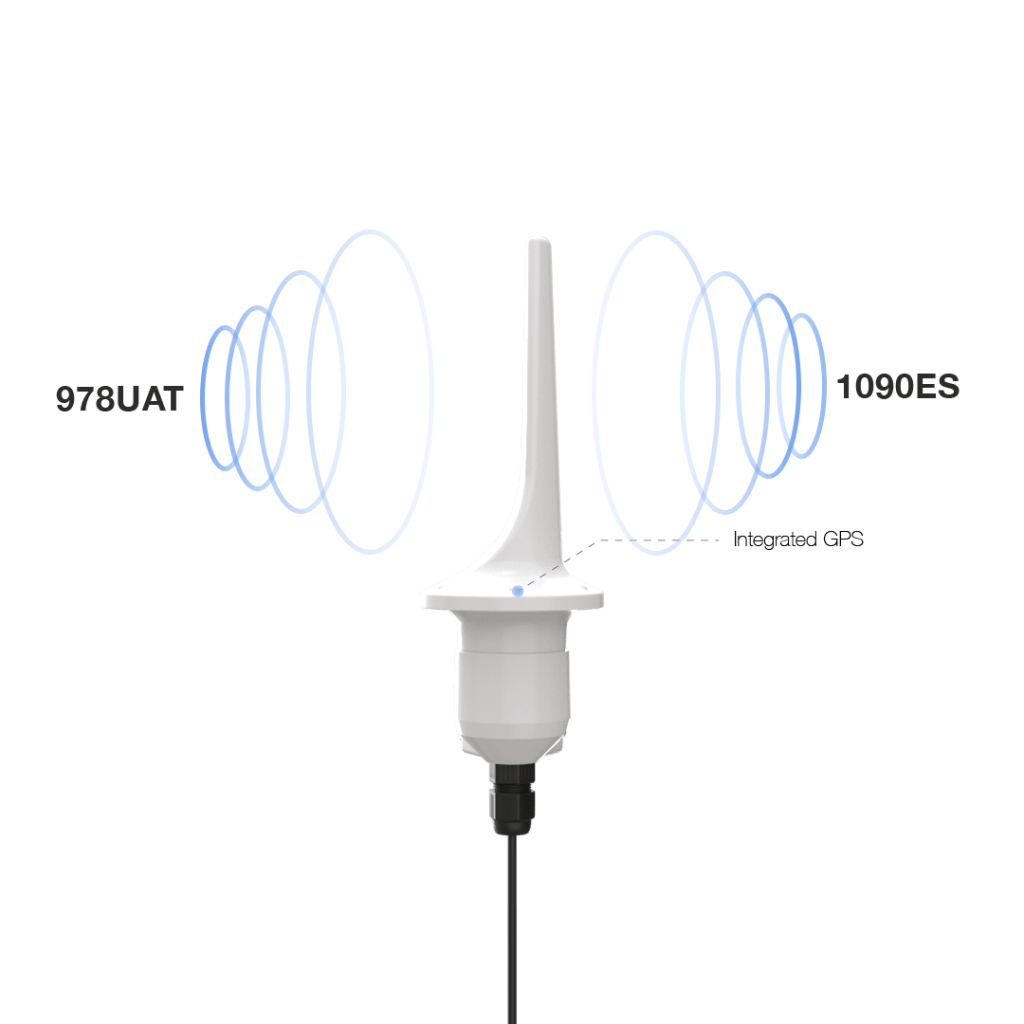
pingStation 2 ($1,750)
Note: This section was written before the pingStation was upgraded to pingStation 3 by uAvionix.
This is a dual-band ADS-B receiver for ground use. A small airport or anyone who cares can use the pingStation 2 to see all ADS-B equipped traffic in their area and display it on several different display options.
Here’s the link: uavionix.com/products/pingstation
Conclusion
With thousands of happy pilots flying behind the original skyBeacon and tailBeacon, it is obvious that uAvionix has a knack for building quality aviation products that are not only compact but also very affordable. The beacons gave pilots an affordable way to meet the ADS-B mandate for literally thousands less than what was available at the time they came to market.
The Sentry Mini is one of the lowest-priced ADS-B In solutions that you can find, and the Sentry includes the innovation of a built-in CO detector. Carbon monoxide is a real issue in the cockpit! Leave it to uAvionix to come up with a simple device that solves two issues. The AV-30-C makes an EFIS ADI available to even the light IFR pilot. The AV-30-C GPS HSI, when fully functional, makes a ton of sense for the light IFR pilot with GPS as their primary nav source. The AV-20-S is a fantastic addition to a light IFR panel dependent on vacuum and mechanical gyros.
Most uAvionix products are available direct from the manufacturer or through your favorite avionics vendor. The Sentry and Mini Sentry are sold through Sporty’s. They are definitely a serious consideration for any pilot seeking quality and value!
Until Next Time … Happy and Safe Flying!



